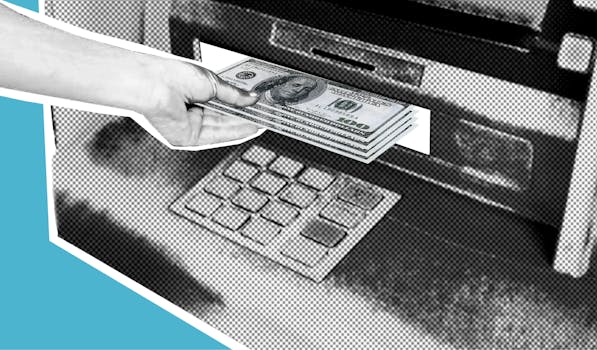Saving Strategies
Saving Challenges: Creative 30-Day and 52-Week Methods That Work
Discover actionable 30-day and 52-week saving challenges, including visual trackers and creative themes, to help you consistently boost your savings and reach financial goals. Try step-by-step tips for real results.
Advertisement
Seeing your savings stack up can feel like a game, not a chore, when you try creative saving challenges. Momentum builds as even small deposits become steady wins. In just a month, one tweak sparks progress.
The topic matters because building a savings habit shields you from surprise expenses and helps you reach both little and big dreams. Traditional approaches work, but challenges make the process visible and even fun. Sticking with a specific plan transforms scattered efforts into real results.
This guide unpacks unique 30-day and 52-week saving challenges, along with strategies, scripts, and everyday examples. You’ll finish with clear steps for launching your own savings journey—one paycheck, piggy bank, or phone reminder at a time.
Setting Up Consistency With the 30-Day Challenge
When you commit to a daily savings routine, you train your brain to make saving automatic. A 30-day challenge transforms habit formation into a set of small, manageable wins. The daily rhythm plants confidence.
In this method, each day for a month, you set aside a specific dollar amount. For example, saving $1 on the first day, $2 on the second day—by day 30, you hit $465 in your pot.
Picking the Right Amount For Your Budget
Sticking with a savings target only works when it feels realistic. Review your spending for the month to spot an amount that sits just above “too easy.” Maybe $5 simply fits your daily habits.
Picture this: Sarah checks her coffee receipts and swaps one café visit a week for home brew. She applies the $4 saved directly to her daily challenge, without feeling deprived.
If an amount feels tight, don’t abandon the challenge. Adjust the days or scale—maybe it’s $0.50 on busy days, $2–3 on weekends. Visual tracking (like marking a calendar) boosts motivation.
Momentum From Visual Progress
Color in a box on a paper tracker or flip a coin jar for each day completed. Making progress visible turns the abstract act of saving into a mini-victory. It’s like scratching off a lottery ticket and seeing your odds improve.
Rachel leaves her coin jar next to her phone charger. Each deposit into her challenge account triggers a small green check in her note app. The effect is a confidence boost at every glance.
This visual feedback minimizes the temptation to skip a day. Even small checks or stars become proof that you’re sticking with your plan—so stay intentional with your mini milestones!
| Challenge Style | Daily Investment | End Goal | Next Step |
|---|---|---|---|
| Fixed Amount | $1 | $30 | Double deposit every weekend for rapid progress |
| Increasing Amount | Start $1, add $1/day | $465 | Mark calendar for each day you complete |
| Theme-Based | Save price of daily coffee | $40–120 | Pair with a habit to lock it in |
| Random Draw | Pick $1–$5 from a jar | $75 | Treat larger days as doubled points |
| Flash Challenge | $10/day for 10 days | $100 | Schedule challenge before a goal purchase |
Supercharging Motivation With the 52-Week Challenge
The 52-week challenge raises your total savings substantially with gentle weekly increases. Each week, you save a little more. By the final week, you’ve built a sizable incentive pot.
This approach smooths out effort since weekly deposits climb at a sustainable pace. For example, start with $1 in week 1, $2 in week 2—by week 52, you’ll have $1,378. Pick any amount that feels sustainable for your household.
Personalizing Weekly Goals for Lasting Progress
Target-setting is personal. Link weekly deposits to life events, like paychecks or seasonal expenses. For busy parents, automate weekly transfers so you never skip a beat—even during holiday crunch.
- Automate transfers the day your paycheck hits; this prevents excuses or missed weeks because the action is out of your hands, making the process effortless in the long run.
- Sync challenge amounts with lower-spending months; double up on weeks with fewer bills, then scale back when utility costs spike, keeping your stress and savings in check every season.
- Color-code each deposit in a wall tracker; visual coding makes progress visible and satisfying, helping the challenge feel like part of your home routine (try “green for growth” every five weeks).
- Advance-fund big weeks with windfalls; shell bonuses, tax refunds, or garage sale profits on higher-deposit weeks to avoid end-of-year discomfort and close each section strong.
- Text a friend a progress photo monthly; quick accountability boosts motivation, and even one “way to go!” message can keep you on track through tough stretches.
Trackers aren’t just for kids. Adults find a sense of accomplishment from physical proof, so keep your tracker where you see it every week for ongoing encouragement.
Mini-Quests for Extra Boosts
Give your challenge a story. Assign a theme to each quarter, like “Spring Clean Savings” for March through May. Celebrate at checkpoints with a board game night or homemade treat.
- Name quarters (Winter Warm-Up, Summer Sprint); this creates mini-goals and keeps you engaged so the year never feels monotonous, helping you adapt when energy dips.
- Choose a mascot or symbol (a pig, a mountain); visualizing progress connects emotion to savings, making victories memorable and reinforcing the story you’re telling all year.
- Invite your household or friends; friendly competition (“bet you can’t hit $50 faster than I can!”) transforms saving into a social experience which enhances follow-through and fun.
- Mark every 13 weeks as a mini-completion; enjoy a low-cost celebration like movie night or favorite snack—rituals make saving a rewarding tradition, boosting your sense of accomplishment.
- Share lessons each checkpoint; reflect aloud or journal what worked and what felt hard, then adjust strategy for next quarter with real learning—this fine-tuning helps you stay committed.
When progress feels fuzzy, remember: micro-celebrations clarify your growth and keep your energy up for the next streak. Rewards matter more than you think.
Fitting Challenges Into Real-World Lifestyles
A savings plan must serve your daily reality. Your grocery runs, gas fill-ups, and social calendar all set the pace and scope of your challenge.
Design strategies that echo routines you already trust. Anchoring new habits to old habits ensures the plan weaves itself into daily life. Let’s break down realistic scripts.
Pairing Savings With Everyday Purchases
Jess rounds each grocery bill to the nearest $10 and moves the change into her savings app. At the gas station, she saves $5 every time she fills up, regardless of receipt totals.
Analogies help: think of every purchase as a chance to “tip” your future self—if you’d tip a barista, tip your savings, too. This positive association cements the routine faster.
Some skip lattes and stash the difference. Others donate the total of any impulse buy resisted. Either approach, scripting the habit (“when I buy groceries, I move $3 to savings”) keeps it automatic without thought.
Adapting To Irregular Incomes
If your paychecks fluctuate, use percentage-based rules. Devin saves 6% of every freelance invoice, no matter the amount. The percentage method sidesteps income swings and ensures steady progress during leaner months.
Schedules matter: on every payday, even irregular ones, set a recurring calendar entry to remind you. Linking savings actions to existing reminders reduces friction and increases success rates in completing your challenge.
For tips-based roles, match every cash tip above $5 with an equal deposit. For gig workers, save a flat $10 after five-star reviews. Customizing to the reality of your work keeps the challenge fair and rewarding.
Keeping Challenges Fresh and Engaging Over Time
Challenge burnout is real, but rotating your approach and milestone rewards keeps things lively. Switch tactics every few months to match energy levels, seasons, or life changes.
Motivation grows when the saving challenge matches your mood, not just your wallet. Tie deposits to daily joys or friendly dares and it feels less like maintenance, more like play.
Seasonal Themes And Quick Wins
Assign a special focus: January for “reset,” summer for travel stashes. Each new season can become a start line all its own, so motivation relaunches with weather changes or holiday countdowns.
Sara launches a “No-Spend November,” banking all saved fast food cash. In May, she launches a “patio fund” to upgrade her outdoor space, fueling her excitement and savings at the same time.
Linking seasonal visuals to your challenge—a snowflake icon for winter, beachball for summer—sharpens your focus and makes reminders feel timely instead of nagging.
Using Accountability Partners for Extra Stickiness
Pair up with a friend for shared progress. Agree to text weekly proof (screenshots, selfies with the jar, or group chats) to create a “no excuses” pact. Seeing another person’s progress helps you keep your streak alive.
“We both put $10 in today, now let’s screenshot!” This micro-ritual turns the experience social, multiplies momentum, and creates room for healthy competition (plus bragging rights come week’s end).
Even quiet partnerships—like tracking with a spouse, child, or coworker—turn silent support into a concrete reason to follow through. Social savings feel real and inescapable, not just wishful thinking.
Removing Roadblocks—Solving Common Saving Challenge Pitfalls
Every saver faces temptation, forgetfulness, or emergencies that disrupt their routine. Naming obstacles early creates room for realistic plans to stay on track, not discouraged.
Practical fixes keep your challenge honest. Adjust, restart, or build in “skip weeks” instead of quitting. Flexibility ensures you keep moving even when life gets messy, not give up.
Salvaging Missed Steps Without Losing Momentum
Miss a day or week? Catch-up deposits let you stay honest. Jane marks her missed days, then doubles up when she gets birthday cash, noting on her tracker: “bonus day, back on course.”
Scripts help: “If I miss my Thursday deposit, I’ll make it up with Friday’s coffee money.” Linking catch-ups to easy wins removes guilt, replacing it with accomplishment and a clear reset point.
Adopt a visible tracker for missed days and celebrate catch-up completions as mini milestones, not failures. Each patch proves resilience, not defeat, and keeps the streak going strong.
Anticipating Emergencies and Adjusting Goals
Saving challenges will get hit by curveballs—unexpected bills, family costs, or urgent repairs. Set aside a tiny “skip fund” as insurance. Mark these days clearly so your progress stays visible and your plan remains intact.
Keep language concrete: “When an emergency hits, I’ll pause and resume next week at the same point.” Adapting openly means you recognize life happens but don’t let it knock you completely off the challenge.
At the end of each month, review what worked and re-calibrate if you got hit with extra expenses. Flexible goals mean you finish the year with savings left, not burnout and regret.
Sparking a Savings Habit for Years Ahead
As you apply saving challenges, the philosophy gets easier: proactive steps build both discipline and freedom. Weekly or daily deposits are like planting seeds—each one lays groundwork for more ambitious financial goals.
Friends who stick with saving challenges end the year with full holiday shopping lists, vacation funds, or just less anxiety about car repairs. These tangible wins fuel more saving, so success snowballs over time.
Let the challenge serve as a launchpad. Experiment with different formats, recurring reminders, and visual trackers. Tailoring the challenge to your life ensures it becomes part of your financial DNA, not a one-off burst.
Frequently Asked Questions
What is the simplest way to start a saving challenge?
Begin by picking a fixed, realistic daily or weekly amount you can commit to. Use a jar or app to track your deposits, making sure to note each completion. Consistency is more important than the dollar value, so adjust as needed while establishing the habit.
What if I miss a day or week during my challenge?
Missing a step doesn’t mean failure. Mark it as a missed day, then double up when you next can. Use simple scripts like “skip then catch up with my next coffee fund deposit.” Resilience and visible tracking keep momentum steady.
How can I make saving challenges fun for my family?
Assign themes (like “Patio Upgrade” or “Movie Night Fund”), celebrate milestones together, and let everyone decorate trackers. Compete for micro-rewards, like picking the family meal once a checkpoint is reached. Turn the challenge into a family event instead of a solo task.
Are there tech tools that can support these challenges?
Many banking apps allow goal setting or transfers, but paper trackers, visible jars, or notes on the fridge work too. Automated reminders and calendar alerts add structure—pick the system that matches your daily routines for a better chance of sticking with your plan.
What should I do with my saved money at the end?
Assign the funds to a specific goal (vacation, emergency fund, holiday gifts). Divide between accounts if needed, but make the deposit in one action to reinforce the reward and close the challenge strong. Celebrate visibly—and set the next target for ongoing growth.





